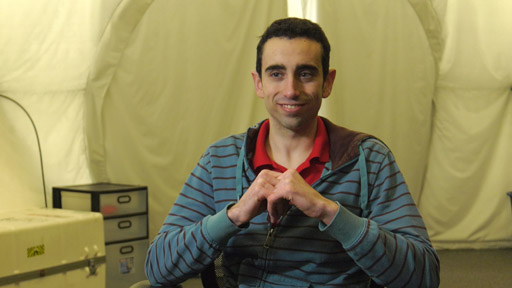-
Tips for becoming a good boxer - November 6, 2020
-
7 expert tips for making your hens night a memorable one - November 6, 2020
-
5 reasons to host your Christmas party on a cruise boat - November 6, 2020
-
What to do when you’re charged with a crime - November 6, 2020
-
Should you get one or multiple dogs? Here’s all you need to know - November 3, 2020
-
A Guide: How to Build Your Very Own Magic Mirror - February 14, 2019
-
Our Top Inspirational Baseball Stars - November 24, 2018
-
Five Tech Tools That Will Help You Turn Your Blog into a Business - November 24, 2018
-
How to Indulge on Vacation without Expanding Your Waist - November 9, 2018
-
5 Strategies for Businesses to Appeal to Today’s Increasingly Mobile-Crazed Customers - November 9, 2018
‘Mars Mission’ Crew Emerges From Yearlong Simulation In Hawaii
[ tags nasa, nasa mars mission, nasa mars hawaii, mars simulation hawaii, man on mars, mars mission, mars simulation, hawaii scientific study, science news, space, space news, technology ] The participants of the HI-SEAS mission.
Advertisement
NASA hopes a yearlong experiment that just ended will help reveal what it would be like to send astronauts to Mars. The HI-SEAS mission saw a crew of six people living in a dome on Hawaii’s Mauna Loa mountain for the past year.
Dubbed “lavanauts”, they were only allowed outside occasionally and had to wear spacesuits.
Though the Hawaii Space Exploration Analog and Simulation (HI-SEAS) was no walk in the park, some of the team members voiced confidence in the success of an actual Mars mission based on their ability to pull through the past year. The team’s resources were limited, meaning they had to bring everything with them on day one, and new supplies of food and water were delivered every four and two months respectively.
Their sole form of contact with the outside world was via email to “mission control” over a data link with a deliberate 20-minute delay.
“I think the technological and psychological obstacles can be overcome”, Cyprien Verseux said after emerging from the Hawaiian Mars.
Asked what she learned about how to cope with living and working with the same five people all the time, Heinicke said emergencies play a surprising role in helping people get along. “It would work on Mars and the implication is that you would be able to get water on Mars from this little greenhouse construct”. “One of your biggest enemies is boredom. So it’s really exciting to be able to welcome the crew back to earth and back to Hawai’i after a year on Mars”, she said.
Soil scientist Carmel Johnston, the commander of the simulated mission, described dealing with the lack of personal space: “It is kind of like having roommates that just are always there and you can never escape them”. [Image via hi-seas.org] Another crew member Sheyna Gifford had shared her opinion of the mission and what it would mean to the future of space travel in a blog post published after leaving the dome. Earlier missions have each lasted four or eight months.
Advertisement
Kim Binsted, HI-SEAS’ principal investigator, told The Associated Press that the researchers were looking forward to getting into the ocean and eating fresh produce and other foods that weren’t available in the dome. The University of Hawaii is now recruiting for crew members to take part in its next two virtual missions to Mars, scheduled to begin in 2017 and 2018.




























